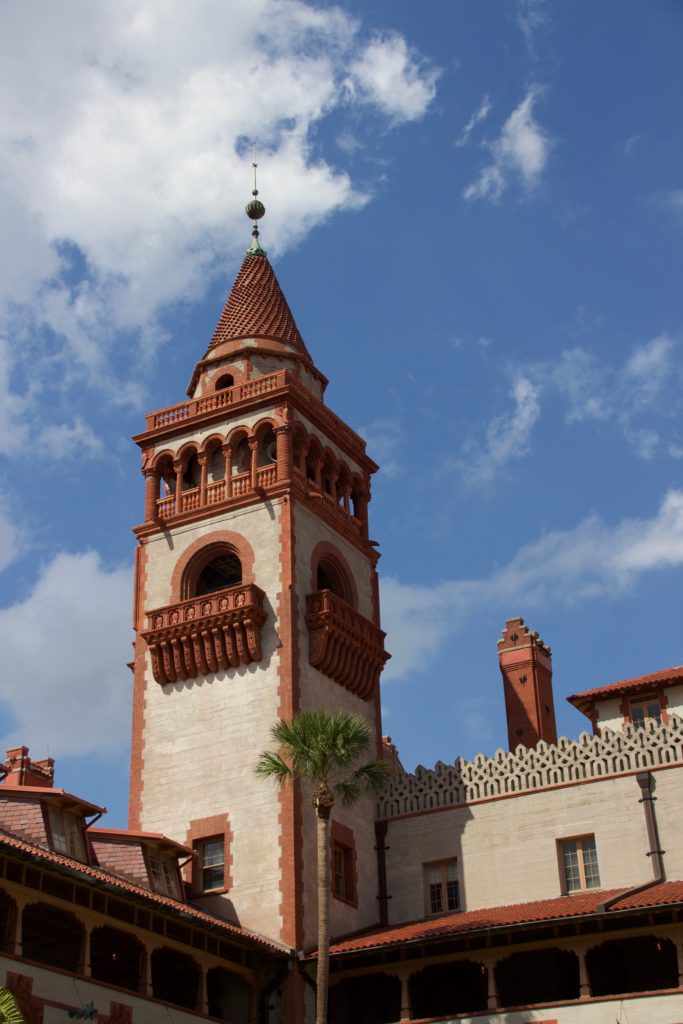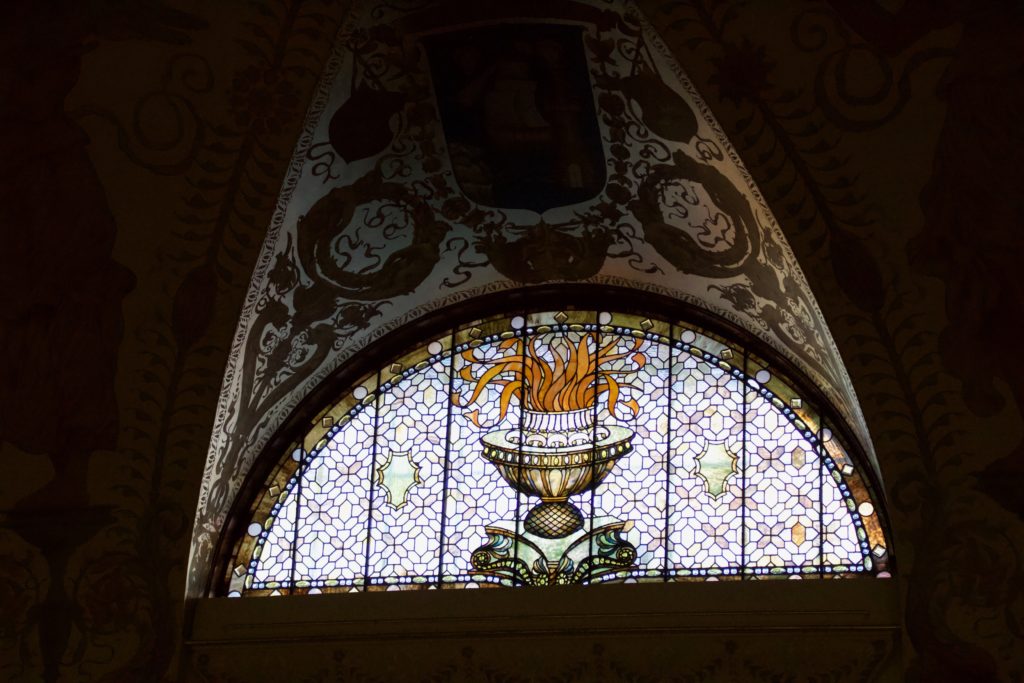
Flagler College tour was on our list of things to see. We knew there was history in the building of this place and wanted to know more.
What is now known as Flagler College, was built to a be luxury hotel in 1888. It was built by millionaire developer and Standard Oil co-founder Henry M. Flagler and completed in 1888. The hotel was designed in the Spanish Renaissance style.
The hotel was the first of its kind constructed entirely of poured concrete, using the local coquina stone as aggregate. The hotel was also one of the first buildings in the country wired for electricity from the onset, with the power being supplied by DC generators installed by Flagler’s friend, Thomas Edison.
The hotel was used as a winter resort for wealthy northerns.

The Ponce de Leon Hotel opened on January 10, 1888. It was an instant success, and within two years, Flagler opened another hotel in St. Augustine, the Alcazar. Just across the street, it absorbed guests that the Ponce could not accommodate and eased the massive demand. A year later, in 1888, he purchased Franklin Smith’s troubled Casa Monica Hotel, renovating it and reopening it as the Cordova. The success convinced Flagler that Florida was viable and ripe for development, and it encouraged him to continue development south along the state’s east coast, as he attempted to create an “American Riviera”.
With the success of the Ponce de Leon, Flagler realized the need for a sound transportation system to support his resorts, and he purchased short-line railroads to form what would later become known as the Florida East Coast Railway. He modernized the existing railroads for them to accommodate heavier loads and more traffic, allowing guests to reach the hotel from New York and other northern cities. Over the next two decades, Flagler expanded the system further south, until it reached Key West.

Interior design of the hotel was headed by Louis Comfort Tiffany, and his company, Tiffany & Co, which provided the stained glass windows in the hotel’s dining room.

The glass in the dining room was beautiful. Pictures do not do them justice.

Murals in the rotunda and dining room were completed by the well-known artist George W. Maynard, who a decade later painted murals in the Treasures Gallery at the Thomas Jefferson Building of the Library of Congress.

The hotel saw declining visitor numbers throughout the 1910s and 1920s. A major cause of this was the continuous extension of Flagler’s railway, which allowed tourists to vacation in the warmer, tropical climates further south, giving rise to cities like West Palm Beach and Miami. However, even as the Alcazar and Cordova Hotels closed, the Ponce remained open and was one of three Flagler hotels in the state to survive the Great Depression and operate into the mid-20th Century.

In 1964, the city was thrust onto the national stage with demonstrations that brought Martin Luther King Jr. to St. Augustine during the civil rights movement. On March 31, 1964, more than a hundred students from the all-black Richard J. Murray Middle School marched downtown and sat-in at the dining room of the Ponce de Leon Hotel. They were met by police with dogs and cattle prods and arrested. It was the first mass sit-in of the St. Augustine movement. Additional incidents took place at other segregated locations in the city, including the Monson Motor Lodge and the local Woolworth’s, all of which contributed to passage of the landmark Civil Rights Act of 1964.
The hotel saw declining visitor numbers in the following years, and in 1967 it was permanently closed.
For tour information: https://legacy.flagler.edu/pages/tours











Leave a Reply